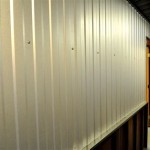Modern Tropical Interior Design Ideas 2024
Modern Tropical interior design in 2024 emphasizes a refined and modernized interpretation of the classic tropical aesthetic. It’s moving beyond simple palm prints and vibrant colors, incorporating sophisticated elements that evoke the essence of tropical environments without feeling cliché. The focus is on creating tranquil, airy spaces that blend seamlessly with the surrounding natural landscape, utilizing sustainable materials and a muted color palette punctuated by strategic pops of vibrant hues.
This evolution reflects a growing desire for homes that are both aesthetically pleasing and environmentally conscious. The emphasis lies on durability, natural textures, and biophilic connection, highlighting the inherent beauty of organic materials. Designers are increasingly considering the architectural integration of indoor and outdoor spaces, creating a continuous flow that blurs the boundaries between the built environment and the natural world.
The modern tropical style in 2024 prioritizes functionality and comfort, eschewing ornate details for clean lines and minimalist décor. It’s about creating a sanctuary that promotes relaxation and well-being, reflecting a renewed appreciation for simplicity and connection with nature. This approach allows for a timeless elegance that adapts to evolving trends while maintaining a sophisticated and refreshing ambiance.
Embracing Natural Materials and Textures
One of the defining characteristics of modern tropical interior design is the extensive use of natural materials. This goes beyond simply incorporating wooden furniture; it encompasses a holistic approach to sourcing and utilizing materials that reflect the local environment. Bamboo, rattan, jute, and seagrass are prime examples, often featured in furniture, flooring, and decorative accents. These materials not only add texture and visual interest but also contribute to the sustainable ethos of the design.
Consider incorporating woven bamboo screens as room dividers or opting for rattan chairs to create a relaxed seating area. Jute rugs can add warmth and texture to floors, while seagrass baskets provide stylish storage solutions. The key is to choose materials that are durable, sustainable, and visually appealing, creating a cohesive and harmonious look. These elements bring an undeniable organic quality into the home, fostering a sense of connection to the natural world.
Furthermore, the treatment of wood plays a crucial role. Instead of highly polished or heavily varnished surfaces, designers are favoring natural finishes that showcase the wood's grain and texture. This might involve using oil-based finishes that enhance the wood's natural color or leaving the wood unfinished entirely, allowing it to age gracefully over time. This approach aligns with the overall emphasis on authenticity and sustainability that defines modern tropical design.
Stone is another essential element, particularly for flooring and wall cladding. Natural stone, such as limestone or travertine, can add a sense of luxury and sophistication while also grounding the space in its natural surroundings. The use of stone not only brings visual appeal but also offers practical benefits, such as thermal mass, which helps to regulate indoor temperatures and reduce energy consumption. By strategically incorporating these natural materials, the design achieves an authentic and sophisticated tropical atmosphere.
Refined Color Palette and Strategic Accents
The color palette in modern tropical design diverges from the stereotypical bright and bold hues often associated with the style. Instead, it embraces a more muted and sophisticated approach, centered around neutral tones such as white, beige, cream, and light gray. These colors create a calming and airy backdrop, allowing the natural materials and textures to take center stage. This neutral foundation allows for the strategic addition of vibrant accents that capture the essence of the tropics without overwhelming the space.
Accents can be introduced through artwork, textiles, and accessories. Think of incorporating pops of color inspired by tropical flora and fauna, such as deep greens, turquoise blues, coral oranges, and vibrant yellows. These colors can be subtly integrated into the design through cushions, throws, curtains, or carefully chosen decorative objects. The key is to use these accents sparingly to create visual interest without sacrificing the overall sense of calm and tranquility.
Another effective strategy is to incorporate natural greenery into the color scheme. Indoor plants not only add a touch of vibrancy but also help to purify the air and create a sense of connection to nature. Consider incorporating large-leafed plants such as banana trees, palms, or ferns, as well as smaller succulents and air plants. These plants can be strategically placed throughout the space to create focal points and add visual interest.
Lighting also plays a crucial role in shaping the color palette. Natural light is essential for creating an airy and inviting space, so it's important to maximize the amount of natural light that enters the room. Sheer curtains or blinds can be used to filter the light and create a soft, diffused glow. In addition to natural light, artificial lighting should be carefully considered to complement the overall color scheme. Warm-toned lighting can create a cozy and inviting atmosphere, while cooler-toned lighting can enhance the sense of spaciousness and airiness. Through careful selection and layering of colors and lighting, the design achieves a harmonious and balanced aesthetic that is both sophisticated and inviting.
Seamless Indoor-Outdoor Integration
A defining feature of modern tropical interior design is the seamless integration of indoor and outdoor spaces. This is achieved through architectural design, material selection, and the strategic use of landscaping. The goal is to create a continuous flow between the interior and exterior, blurring the boundaries between the built environment and the natural world. This approach not only maximizes the use of space but also enhances the connection to nature and promotes a sense of well-being.
Large sliding glass doors or windows are essential for creating this seamless transition. These openings allow for abundant natural light to enter the space and provide unobstructed views of the surrounding landscape. When the weather permits, these doors can be opened completely, creating a truly open-plan living area that extends into the outdoor space. This allows for natural ventilation and creates a sense of spaciousness and freedom.
The choice of flooring materials is also crucial for creating a cohesive indoor-outdoor aesthetic. Consider using the same flooring material for both the interior and exterior spaces, such as natural stone, concrete, or wood decking. This creates a visual connection between the two areas and reinforces the sense of continuity. The flooring material should also be durable and weather-resistant, capable of withstanding the elements without compromising its aesthetic appeal.
Landscaping plays a vital role in enhancing the indoor-outdoor connection. Incorporating lush greenery, tropical plants, and water features can create a serene and inviting outdoor space that complements the interior design. Consider creating an outdoor living area with comfortable seating, a dining table, and a barbecue grill. This allows you to enjoy the natural surroundings and entertain guests in a relaxed and informal setting. By carefully coordinating the architectural design, material selection, and landscaping, the design achieves a seamless and harmonious integration of indoor and outdoor spaces, creating a truly exceptional living environment.
Furthermore, consider the impact of sunlight and shade when planning the integration. Overhangs, awnings, or strategically placed trees can provide shade during the hottest parts of the day, allowing you to enjoy the outdoor space even in intense sunlight. Thoughtful landscaping can also create privacy and screen the outdoor space from neighboring properties, enhancing the sense of seclusion and tranquility. The integration should cater to all senses; think of the sound of water features blending with ambient music, the scent of flowering plants mingling with fresh air, and the textures of natural materials underfoot.
In essence, modern tropical interior design in 2024 strives to create a sophisticated and sustainable living environment that celebrates the beauty of the natural world. By embracing natural materials, a refined color palette, and seamless indoor-outdoor integration, a home can become a tranquil and inviting sanctuary that reflects a renewed appreciation for simplicity, comfort, and connection with nature.

Designing A Modern Tropical House Edward George

20 Tropical Living Room Décor Ideas Bring The Tropics Home

What Is Modern Tropical Interior Design Tips And Ideas Orange Moon Interiors

Designing A Modern Tropical House Edward George

20 Tropical Living Room Décor Ideas Bring The Tropics Home

New Modern House Design 2024 Tropical Ideas Nhakien Tropicalhouse

Designing A Modern Tropical House Edward George

May 3 2024 Discover And Save Your Own Pins On Homeinspiration Homedecorating In

Before After Lush Modern Tropical Bathroom Decorilla Interior Design

Island Resilience From Devastation To Dream Home In The Bahamas
Related Posts








